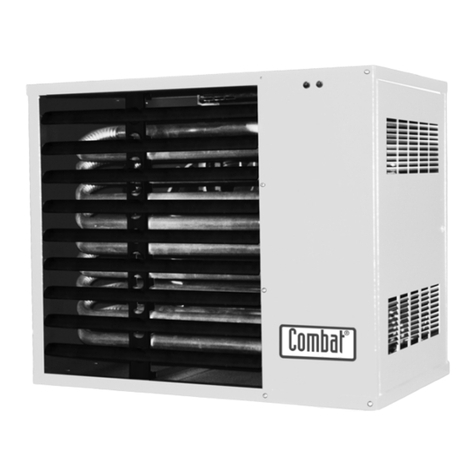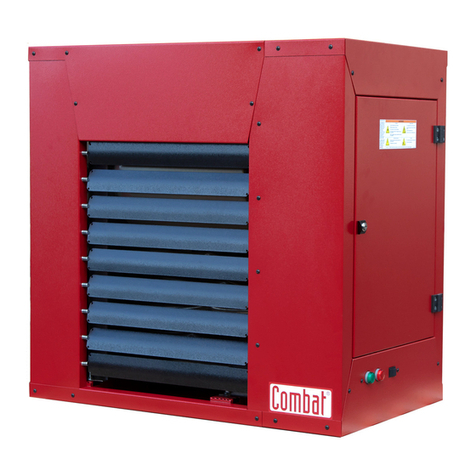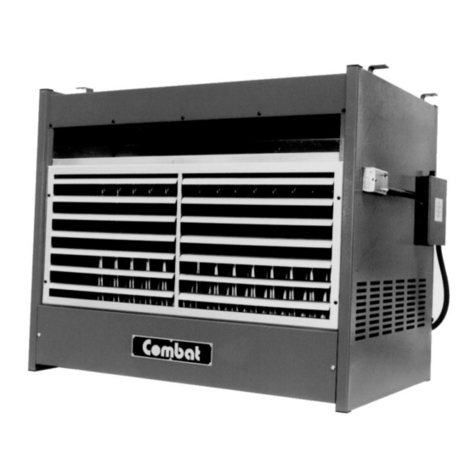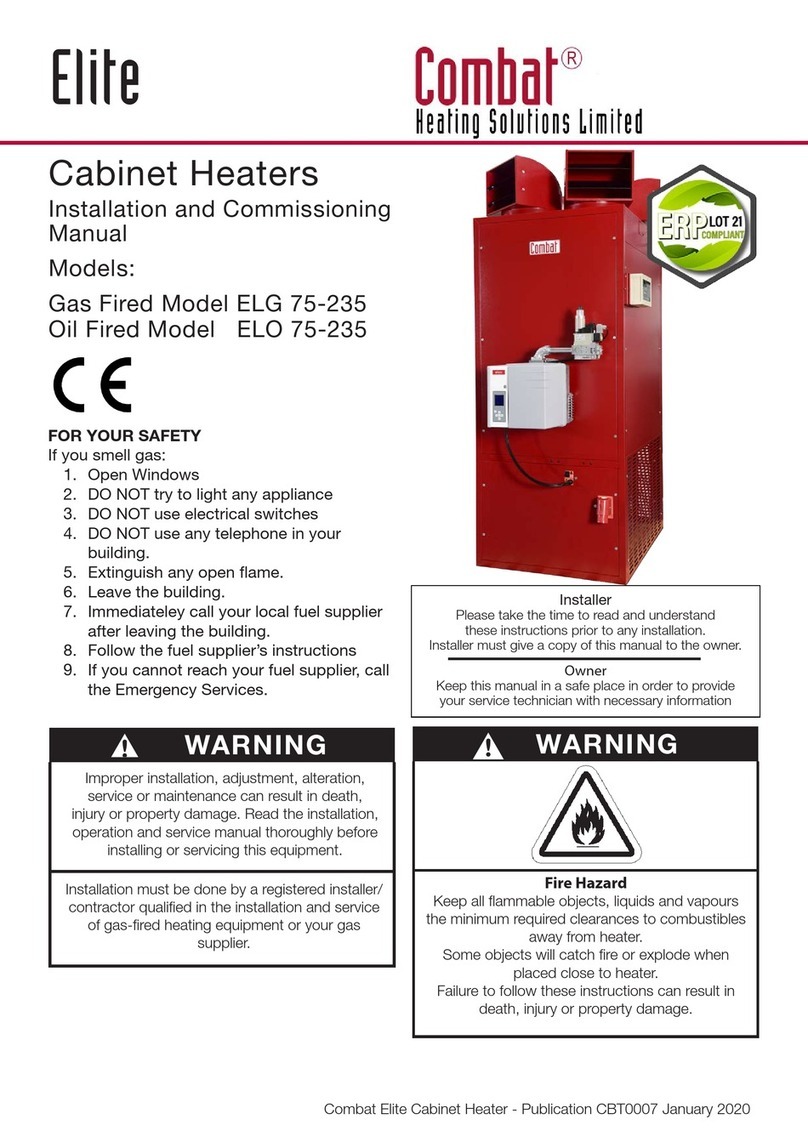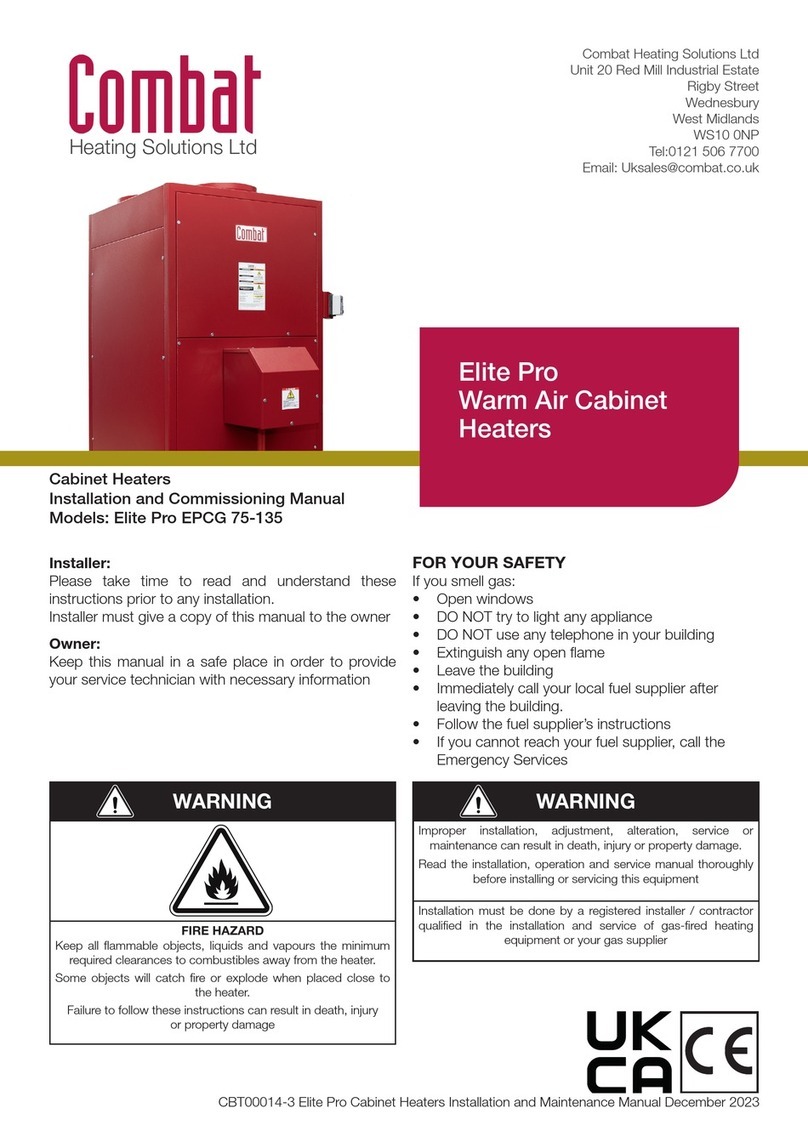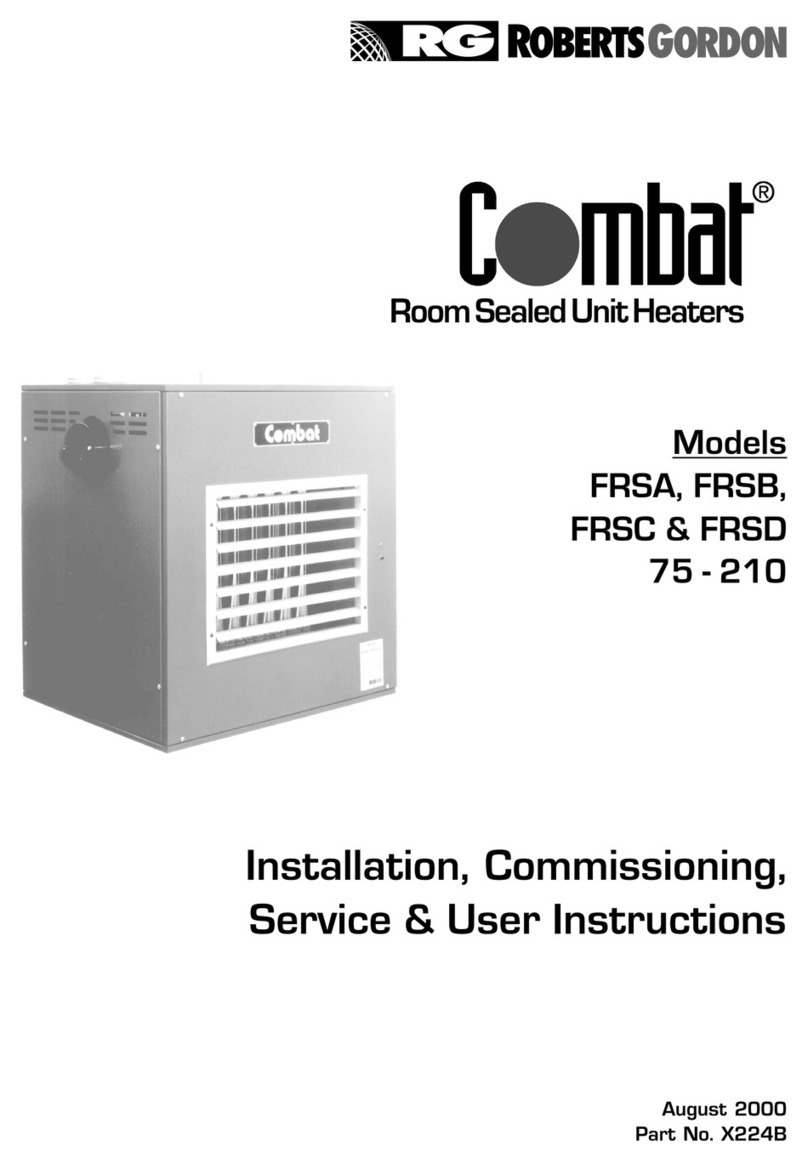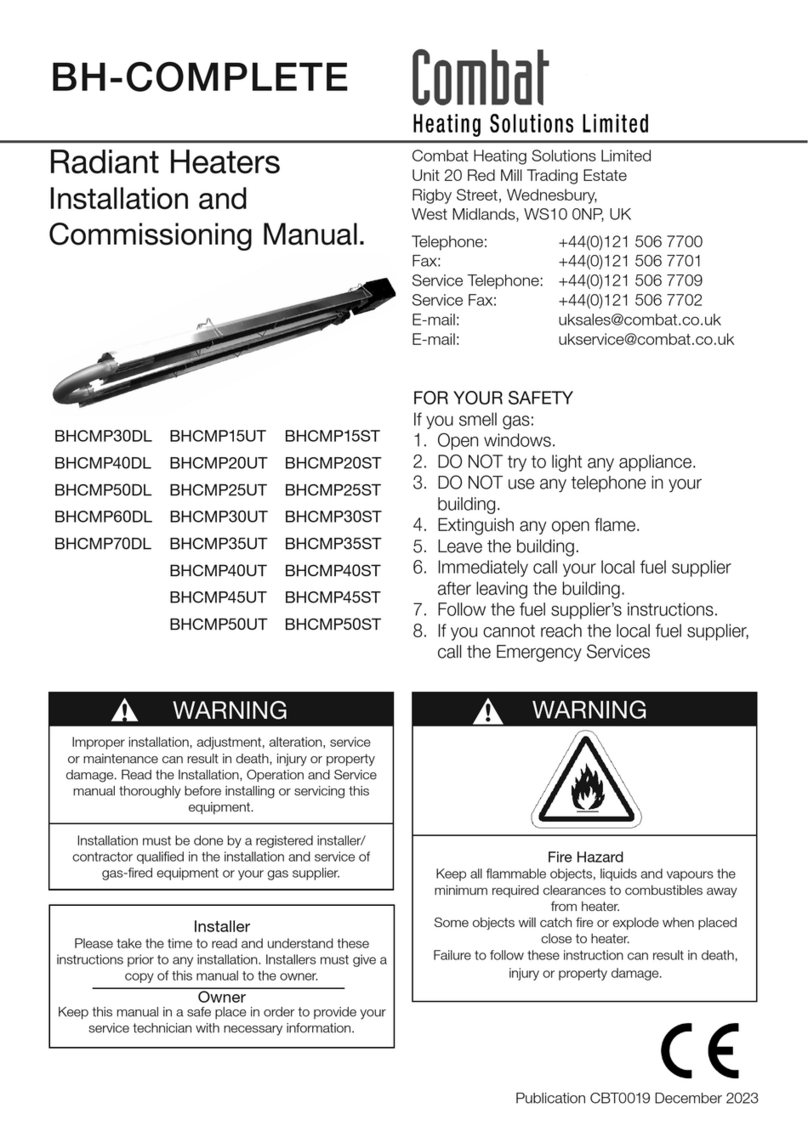If the equipment is not used for long periods, shut the gas sup-
ply off through the gas shut off valve and disconnect it from
the power supply.
If the heater is to be put out of service, in addition to the above
operations, potential sources of hazard on the unit must be
removed.
It is strictly forbidden to obstruct the Venturi pipe inlet, located
on the burner-fan unit, with your hands or with any other objects.
Anyobstructioncouldcauseabackrefromthepremixedburner.
2.6. Transport and Handling
The heater is delivered fastened to a pallet and covered with a
suitably secured cardboard box.
Unload the heater from the truck and move it to the site of
installation by using means of transport suitable for the shape
of the load and for the weight.
If the unit is stored at the customer’s premises, make sure a
suitable place is selected, sheltered from rain and from excessive
humidity, for the shortest possible time.
Any lifting and transport operations must be carried out by
skilled staff, adequately trained and knowledgeable on the
working procedures and safety regulations.
Once the equipment is moved to the correct position, the un-
packing operation can be started.
2.7. Packaging
The unpacking operation must be carried out by using suitable
tools or safety devices where required. Recovered packaging
materials must be separated and disposed of according to ap-
plicable regulations in the country of use. While unpacking the
unit, check that the unit and all its parts have not been damaged
during transport and match the order. If damage has occurred
or parts are found to be missing, immediately contact the sup-
plier. The manufacturer is not liable for any damages occurred
during transport, handling or unloading.
2.3. Power supply
The equipment must be correctly connected to an effective
earthing system, made in compliance with current regulations
(CEI64-8,onlyappliestoItaly).
Cautions
• Check the effectiveness of the earthing system and, if
required,calloutaqualifiedengineer.
• Check that the mains power supply is the same as the
power input stated on the equipment dataplate and in
this manual.
• Do not swap the neutral with the live wire.
•Theelectricalsystemand,morespecifically,thecablesec-
tion, must be suitable for the equipment maximum power
input , shown on the dataplate and in this manual.
Do not pull electric cables and keep them away from heat sources.
---------------------------------------------------------------------------------
NOTE: It is compulsory to install, upstream of the power
cable, a fused multi-pole switch with contact opening wider
than 3mm.
The switch must be visible, accessible and less than 3m
away from the control board.
All electrical operations (installation and maintenance)
must be carried out by suitably qualied staff.
---------------------------------------------------------------------------------
2.4. Operation
Do not allow children or inexperienced people to use any electri-
cally powered equipment.
The following instructions must be followed:
•do not touch the equipment with wet or damp parts of your
body and/or with bare feet;
•do not leave the equipment exposed to the elements (rain,
sunetc....)unlessitisadequatelyprotected;
• do not use the gas pipes to earth electrical equipment;
• do not touch the hot parts of the heater, such as the flue
gas exhaust duct;
•donotwettheheaterwithwaterorotherfluids;
• do not place any object over the equipment;
• do not touch the moving parts of the heater:
2.5. Maintenance
---------------------------------------------------------------------------------
Maintenance operations and combustion inspections must
be carried out in compliance with current standards.
---------------------------------------------------------------------------------
Before carrying out any cleaning and maintenance operations,
isolate the heater from the mains power supply via the switch
located on the electrical system and/or on the shut-off devices.
If the heater is faulty and/or incorrectly operating, switch it off
and do not attempt to repair it yourself, but contact the local
Technical Service Centre.
All repairs must be carried out by using genuine spare parts.
Failure to comply with the above instructions could compromise
the safety of the equipment and invalidate the warranty.


















